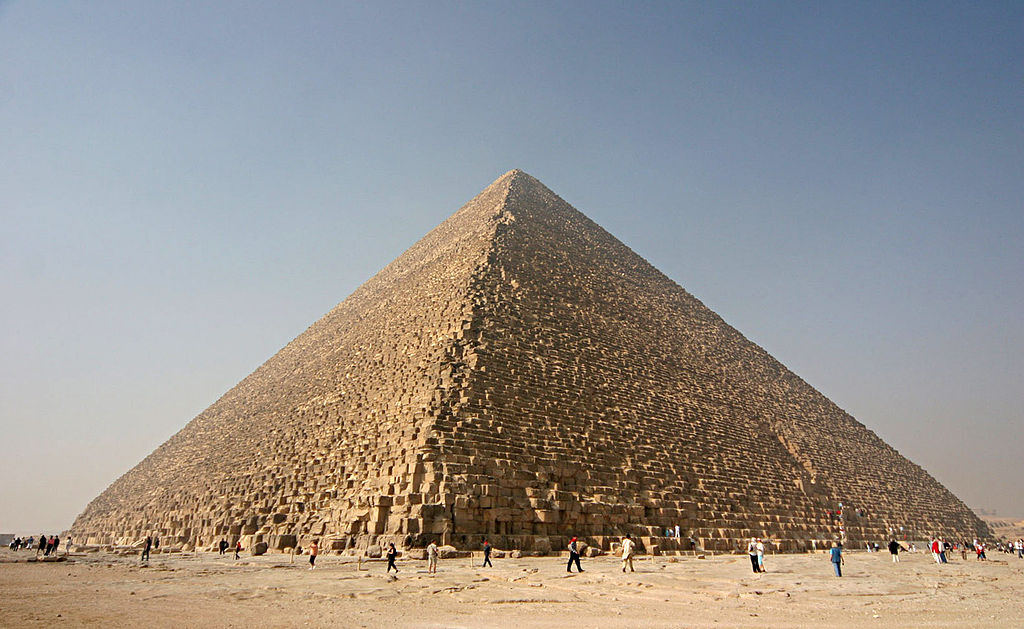The Great Pyramid of Khufu
The Great Pyramid of Khufu completed ca. 2650 BCE, in Giza Egypt.
Photograph attributed to Nina Aldin Thune, 2005, Creative Commons Attribution-Share Alike 3.0 Unported license.
It is appropriate to start with the one remaining structure, which was listed as one of the seven ancient wonders of the world. The Great Pyramid of Giza in Egypt bears the seal of the fourth dynasty Egyptian Pharaoh Khufu (Greek: Kheops) and was completed about 2650 BCE. The square base of the pyramid has sides measuring 230.4 metres and the original height was 146.5 metres, but now stands at 138.8 metres, owing perhaps to the theft of stones and erosion. Its total mass approaches 6 million tonnes. It remained the tallest man-made structure in the world for almost 4 millennia, when it was surpassed by the 160 metre-tall spire of Lincoln Cathedral, England, completed in 1311.
That such a massive and stable structure survived is not as remarkable as how it was built. It has been estimated that 2.3 million limestone blocks was needed from nearby sources, but the largest granite stones, used inside the pyramid, weigh from 25 to 80 tonnes and totalling 8,000 tonnes came from Aswan, more than 800 km distant. The exterior was originally cased in white limestone totalling more than 5,000 tones, which was quarried on the other side of the Nile river. Since the construction is understood to have been completed in 20 years, the scale of the logistics and how it was accomplished in ancient times is mind boggling. There are conflicting views on how the actual construction was accomplished, but the results have survived for more than 4,600 years!
A detailed description may be found at the following URL: https://en.wikipedia.org/wiki/Great_Pyramid_of_Giza

